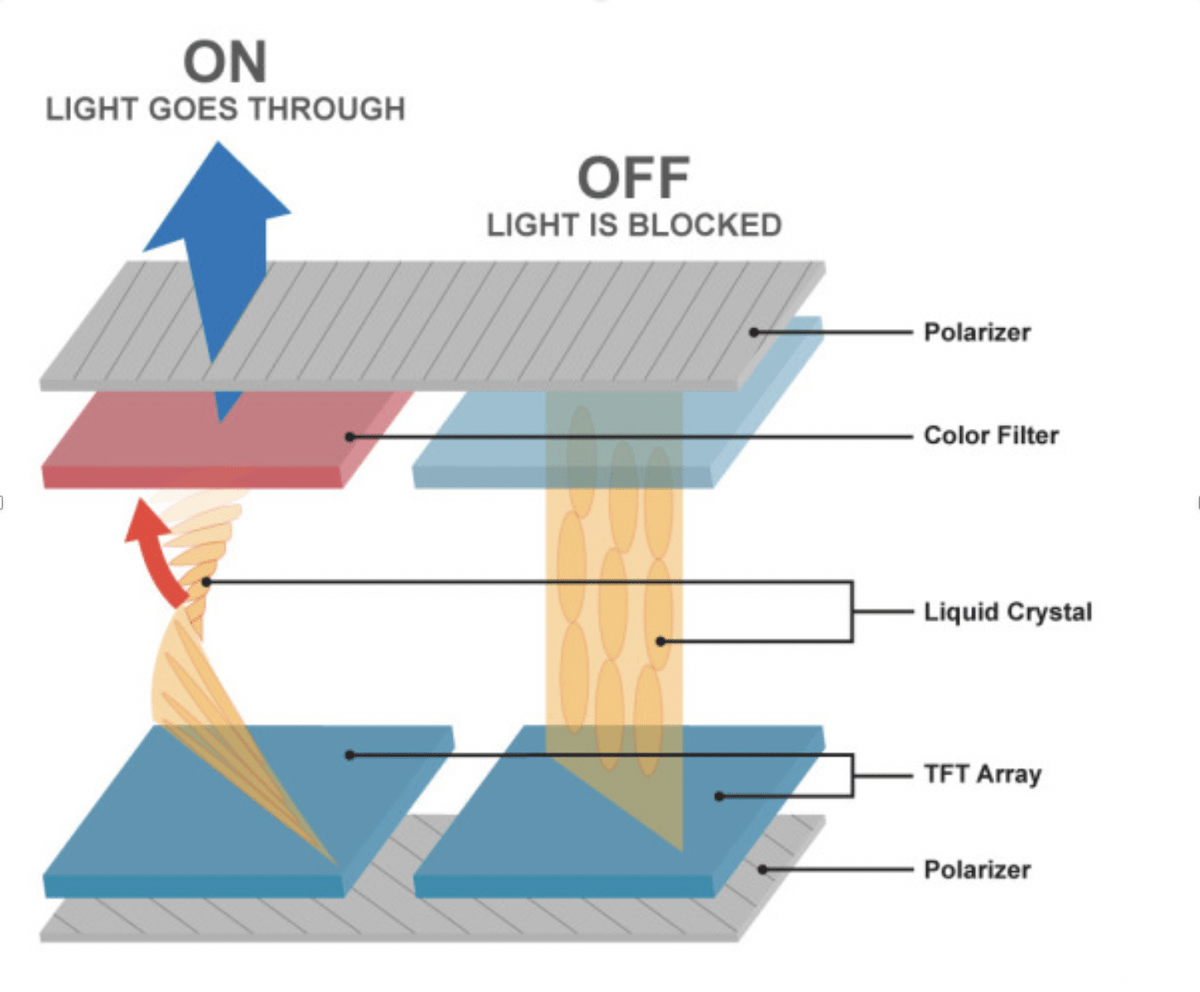1970: The TN-Effect Liquid Crystal Display
In 1970, the physicists Martin Schadt and Wolfgang Helfrich invented the twisted nematic field effect (TN-effect) whilst working at Hoffmann-La Roche Ltd, in Basel. This invention rapidly paved the way for commercial Liquid Crystal Displays (LCD), which are still in use today.

In 1970, the physicists Martin Schadt and Wolfgang Helfrichinvented the twisted nematic field effect (TN-effect) whilst working at Hoffmann-La Roche Ltd, in Basel. This invention rapidly paved the way for commercial Liquid Crystal Displays (LCD), which are still in use today. The resulting patent CH532261 was licensed worldwide to electronics and watch industries.
The twisted nematic effect (TN-Effect) is based on the precisely controlled realignment of liquid crystal molecules between different ordered molecular configurations under the action of an applied electric field. This is achieved with little power consumption and at low operating voltages.

The TN panels “twist” polarized light so it is either blocked by or shines through another polarizer.
How it works
An LCD requires an external light source. This can be a simple mirror in the case of reflective LCDs or a light such as an LED. The light first passes through a polarizing filter, which aligns the light waves in one direction. Then it passes through the TN liquid crystal. The molecules of this crystal are special in that they “twist” the light 90 degrees as it passes through. Next the light passes through a color filter, which tints the light red, green, or blue. Finally, the light reaches a second polarizing filter, oriented 90 degrees to the first one. If it weren’t for the TN crystal, this second filter would block all light; but since the TN crystal twists the light so that it is aligned to the polarizer, it all passes through.
When a voltage is applied to the liquid crystal, it “untwists,” changing the light’s orientation causing more of it to be blocked by the second polarizing filter.
In the case of a colour TN panel, each pixel consists of three rectangular subpixels: one red, one green, and one blue. By varying the voltage to each of the crystals in these subpixels, the three colors can be mixed to produce different hues.
Application of TN LCD panels today
Most TN displays have a characteristic black-on-gray or black-on-silver appearance and are suitable for use in alphanumeric readouts such as those found in wristwatches, thermometers, instrumentation, mobile phone displays and calculator displays. The high-resolution LCD panels typically found in handheld and notebook computers now use a different technology.
About Martin Schadt b. 1938 Liestal

Martin Schadt studied physics at the University of Basel and completed his Ph.D in 1967. He then worked for 2 years as a postdoc at the NRC in Canada, where he discovered the world’s first organic light emitting diode (OLED). After a period with the watch company Omega, he joined a newly formed liquid crystal research group at F. Hoffmann-La Roche Ltd., where he and Wolfgang Helfrichdiscovered the TN-Effect.
References and further reading


Please Note:
You may use one of these HTML tags and attributes: <a href="" title=""> <abbr title=""> <acronym title=""> <b> <blockquote cite=""> <cite> <code> <del datetime=""> <em> <i> <q cite=""> <s> <strike> <strong>